We are now en route from Jaipur to Agra via Fatehpur Sikri, having checked out of the Golden Tulip Hotel at just after 8.30 and left Jaipur via the main road that divides the old and new sections of the city. As we drive along the road there are more modern or western type shops, even the ubiquitous McDonald's is here.
Today is the festival of Brother and Sister – so a lot of people are travelling.
Festival of Brother and Sister
Raksha Bandhan is a Hindu festival that celebrates the love and duty between brothers and sisters; the festival is also popularly used to celebrate any brother-sister like loving protective relationship between men and women who may or may not be related. It is called Rakhi Purnima, or simply Rakhi, in many parts of India. The festival is observed by Hindus, Jains, and many Sikhs.
Raksha Bandhan in Sanskrit literally means "the tie or knot of protection" It is an ancient Hindu festival that ritually celebrates the love and duty between brothers and their sisters. The sister performs a Rakhi ceremony, and then prays to express her love and her wish for the well being of her brother; in return, the brother ritually pledges to protect and take care of his sister under all circumstances. It is one of the several occasions in which family ties are affirmed in India. It is observed in the Hindu calendar month of Śrāvaṇa, and typically falls in August every year.
We're on the national highway after 40 minutes and come to our first toll booth at 9.40 when we pass Jhar.
The buses in Jaipur were jam packed inside and young men, mainly young men, sit on the roof of the buses. We see some of them on the highway. The driving rain begins to fall and the sodden men cling to the roof rack – they can do nothing to keep dry. We pass a few 4 wheel drive pick ups with people standing on the rear bumper.
The rain stops at 9.50 and although the sky is cloudy it is still bright.
The landscape now is more rural and flat with crops growing on both sides of the highway. There are familiar concrete style cafes / restaurants along the road – perhaps at 5-10 km intervals. Some also have hoardings saying "Hotel", they look very basic and probably cater for the truck drivers.
We pass a number of brick kilns, but as we drive past it is difficult to see whether or not they are currently in use. Before leaving for India I remember reading about brick kiln workers trying to organise themselves to break out of debt bondage. In many cases the initial wage advance taken by the workers combined with low wages and the obligation to work until the end of the season means that families become bonded labour. The bondage and the attendant poverty are passed down the generations as the children who migrate and work with their parents are deprived of any education and consequently have limited options in the labour market.
Just before 10.00am we pass the sign for Jirota. The driver tells us this area produces Durries - which are not carpets as we once mistakenly thought - but actually carpet covers.
Along the road side and especially at large intersections I'm struck by the number of advertising boards and painted signs for universities and schools..
Looking left I can see a settlement of fairly well set out houses, whilst on the right in the distance are the hills.
The volume of traffic on NH11 is much lighter than our journey from Delhi. There are fewer trucks but more motor bikes - most with a pillion passenger. Some, typically a young man wearing sandals, shirt billowing in the wind with a woman in a sari sitting side saddle. There are some with a family on board, either one or two children. Lighter traffic plus the good road surface and absence of road works means that we're able to make steady progress.
From pink city to ghost city
Saturday, August 13, 2011
 Jaipur, Rajasthan, India
Jaipur, Rajasthan, India
Other Entries
-
1A Passage to India
Aug 085 days prior London, United Kingdomphoto_camera0videocam 0comment 0
London, United Kingdomphoto_camera0videocam 0comment 0 -
2Looking for the real India...
Aug 094 days prior Delhi, Indiaphoto_camera8videocam 0comment 0
Delhi, Indiaphoto_camera8videocam 0comment 0 -
3New day - New Delhi
Aug 103 days prior Delhi, Indiaphoto_camera25videocam 0comment 0
Delhi, Indiaphoto_camera25videocam 0comment 0 -
4On the road to Rajasthan
Aug 112 days prior Delhi, Indiaphoto_camera9videocam 0comment 0
Delhi, Indiaphoto_camera9videocam 0comment 0 -
5Jaipur - The pink city
Aug 112 days prior Jaipur, Indiaphoto_camera14videocam 0comment 0
Jaipur, Indiaphoto_camera14videocam 0comment 0 -
6From Palace of Winds to Stargazing and City Palace
Aug 121 day prior Jaipur, Indiaphoto_camera49videocam 0comment 0
Jaipur, Indiaphoto_camera49videocam 0comment 0 -
7From pink city to ghost city
Aug 13 Jaipur, Indiaphoto_camera9videocam 0comment 0
Jaipur, Indiaphoto_camera9videocam 0comment 0 -
8The Jewel in the Crown
Aug 13later that day Fatehpur Sikri, Indiaphoto_camera22videocam 0comment 0
Fatehpur Sikri, Indiaphoto_camera22videocam 0comment 0 -
9A grand night in Agra
Aug 13later that day Agra, Indiaphoto_camera7videocam 0comment 0
Agra, Indiaphoto_camera7videocam 0comment 0 -
10Taj Mahal - Crown of palaces
Aug 141 day later Agra, Indiaphoto_camera24videocam 0comment 0
Agra, Indiaphoto_camera24videocam 0comment 0 -
11All aboard the Shatabdi Express
Aug 152 days later Agra, Indiaphoto_camera2videocam 0comment 0
Agra, Indiaphoto_camera2videocam 0comment 0 -
12On the road from Jhansi to Khajuraho
Aug 152 days later Jhansi, Indiaphoto_camera8videocam 0comment 0
Jhansi, Indiaphoto_camera8videocam 0comment 0 -
13Temple "..."in the presence of God"
Aug 152 days later Khajuraho, Indiaphoto_camera19videocam 0comment 0
Khajuraho, Indiaphoto_camera19videocam 0comment 0 -
14Temples
Aug 163 days later Khajuraho, Indiaphoto_camera35videocam 0comment 0
Khajuraho, Indiaphoto_camera35videocam 0comment 0 -
15From spiritual life to village and school life
Aug 163 days later Rajnagar, Indiaphoto_camera14videocam 0comment 0
Rajnagar, Indiaphoto_camera14videocam 0comment 0 -
16Aarti on the Ganges
Aug 163 days later Varanasi, Indiaphoto_camera17videocam 0comment 0
Varanasi, Indiaphoto_camera17videocam 0comment 0 -
17Morning ritual on the Ganges
Aug 174 days later Varanasi, Indiaphoto_camera26videocam 0comment 0
Varanasi, Indiaphoto_camera26videocam 0comment 0 -
18Sarnath - Starting the Wheel of the Dharma
Aug 174 days later Sarnath, Indiaphoto_camera31videocam 0comment 0
Sarnath, Indiaphoto_camera31videocam 0comment 0 -
19Leaving Varanasi or bye bye Benares
Aug 185 days later Varanasi, Indiaphoto_camera0videocam 0comment 0
Varanasi, Indiaphoto_camera0videocam 0comment 0 -
20Transit Delhi
Aug 185 days later Delhi, Indiaphoto_camera1videocam 0comment 0
Delhi, Indiaphoto_camera1videocam 0comment 0 -
21Overnight luxury in boom town
Aug 185 days later Gurgaon, Indiaphoto_camera0videocam 0comment 0
Gurgaon, Indiaphoto_camera0videocam 0comment 0 -
22Return trip to Delhi airport
Aug 196 days later Gurgaon, Indiaphoto_camera2videocam 0comment 0
Gurgaon, Indiaphoto_camera2videocam 0comment 0 -
23From Delhi to Dabolim
Aug 196 days later Delhi, Indiaphoto_camera1videocam 0comment 0
Delhi, Indiaphoto_camera1videocam 0comment 0 -
24Goa
Aug 196 days later Dabolim, Indiaphoto_camera0videocam 0comment 0
Dabolim, Indiaphoto_camera0videocam 0comment 0 -
25Where the boys go!
Aug 196 days later Sinquerim, Indiaphoto_camera0videocam 0comment 0
Sinquerim, Indiaphoto_camera0videocam 0comment 0

 Jaipur, Rajasthan, India
Jaipur, Rajasthan, India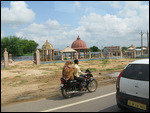
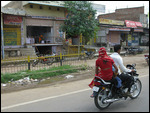
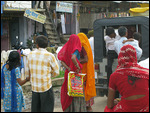
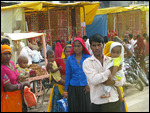
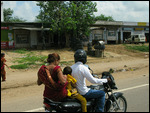
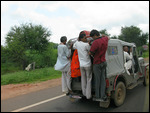
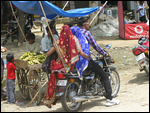
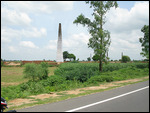
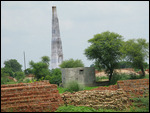


2025-05-23